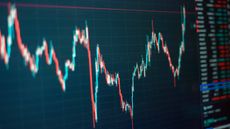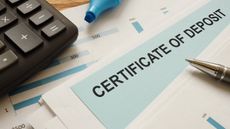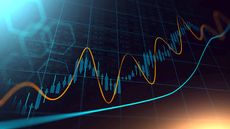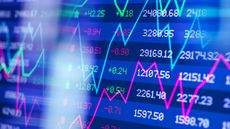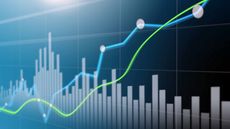I-Bond Rate Is 6.89% for Next Six Months
If you missed out on the opportunity to buy I-bonds at their recent high, don’t despair. The new rate is still good, and even has a little sweetener built in.
- (opens in new tab)
- (opens in new tab)
- (opens in new tab)
- Newsletter sign up Newsletter
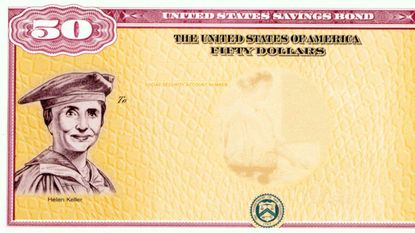

Though the potential return of U.S. Treasury I-bonds as a long-term investment is no sure thing, Americans are voting for them with their wallets: Billions of dollars of these formerly obscure securities have been sold in 2022, including in a last-minute rush at the end of October to capture them at a rate of 9.62% that knocked the website for TreasuryDirect, the only place these can be bought, offline at times.
Of course, you can get them just fine today, now that rate they will pay for the next six months is down to 6.89%. That number is made up of two components: One is based on the government’s consumer price index from this past September (6.49%) and one is a fixed rate – picked by the Treasury Department without further explanation – that will only apply to bonds bought between now and May 1: 0.4%. And that fixed rate is, well, fixed – unlike the variable inflation component, whatever the fixed rate was when the bond was issued, you’ll get paid that for as long as you hold the bond (and the term is 30 years).
So here’s an interesting twist, and possibly a consolation prize for anyone who didn’t manage to get I-bonds when they were paying a higher yield: those bonds paid a fixed rate of zero.
Why does this matter? Because the variable yield that makes I-Bonds attractive now does swing - and, at times, offer investors no yield at all. This was the case for people holding bonds with a zero fixed rate during periods where inflation was flat (or even negative). This happened, for example, in 2015 and 2009. The Treasury Department publishes a chart tracking the historical payouts of I-bonds going back to 1998.
While it might seem unimaginable now as the Federal Reserve continues to hike short-term interest rates and other rates including mortgages climb to levels not seen in decades, zero inflation or deflation could return. And if that happens, those who hold bonds bought between now and May 1 will continue to receive 0.4% interest, while holders of the 9.62% bonds will receive – at least so long as inflation is flat or negative – nothing.
And, again, if 0.4% seems laughably low, remember that only a few years ago, savers looking to certificates of deposit, savings accounts and other low-risk investments would have been darn happy with that. (Looking for safer returns outside bonds? You might consider the advantages of brokered CDs.)

Sign up for Kiplinger’s Free E-Newsletters
Profit and prosper with the best of expert advice on investing, taxes, retirement, personal finance and more - straight to your e-mail.
Profit and prosper with the best of expert advice - straight to your e-mail.
But that’s for the future. Are I bonds still a good deal now that they’re paying 6.89%? Per David Payne, Kiplinger’s staff economist, that yield is “still the best rate available on any investment which guarantees the return of principal” – a good reminder that U.S. Savings Bonds are as safe as houses. Like others, he is forecasting that the inflation rate will fall as the Fed’s battle against inflation continues. And he notes several key caveats about I-bonds, particularly for those new to these investments:
First, I-bonds must be held for at least a year. There is no way to cash them before this period. And second, if you redeem them before five years from the time they were issued, the last three months of interest is lost. How big a hit is that? Payne says that would reduce their yield for that year by about a percentage point given future estimates of what inflation is likely to be.
Another key issue: There’s a limit of $10,000 a year to how much you can buy (and there are ways around that, too.) In case you haven't noticed, I-bonds are complicated! Whether you’re a lucky new holder of a 9.62%-rate i-bond or still thinking of purchasing now, check out our FAQ, What Are I Bonds.

In his current role as Senior Online Editor, David edits and writes a wide range of content for Kiplinger.com. With more than 20 years of experience with Kiplinger, he has worked on and written for a range of its publications, including The Kiplinger Letter and Kiplinger’s Personal Finance magazine. He is a co-host of Your Money's Worth, Kiplinger's podcast and has helped develop the Economic Forecasts feature.
-
-
 Longevity: The Retirement Problem No One Is Discussing
Longevity: The Retirement Problem No One Is DiscussingMany people saving for retirement fail to take into account how living longer will affect how much they’ll need once they stop working. What should they do?
By Brian Skrobonja, Chartered Financial Consultant (ChFC®) • Published
-
 Capital Gains Taxes Trap: How to Avoid Mutual Fund Tax Bombs
Capital Gains Taxes Trap: How to Avoid Mutual Fund Tax BombsIt’s bad enough when your mutual fund’s assets lose value, but owing unexpected capital gains taxes after those losses is doubly frustrating.
By Samuel V. Gaeta, CFP® • Published
-
 High Yields From High-Rate Lenders
High Yields From High-Rate LendersInvestors seeking out high yields can find them in high-rate lenders, non-bank lenders and a few financial REITs.
By Jeffrey R. Kosnett • Published
-
 Time to Consider Foreign Bonds
Time to Consider Foreign BondsIn 2023, foreign bonds deserve a place on the fringes of a total-return-oriented fixed-income portfolio.
By Jeffrey R. Kosnett • Published
-
 Stock Market Today: Markets Up Again as Bank, Energy Stocks Outperform
Stock Market Today: Markets Up Again as Bank, Energy Stocks OutperformThe major indexes closed higher for a second straight day ahead of tomorrow's highly anticipated Fed decision.
By Karee Venema • Published
-
 Five Investment Strategies to Focus on in 2023
Five Investment Strategies to Focus on in 2023Planning instead of predicting, reducing allocations of illiquid assets and having a diversified portfolio are good ways for investors to play defense this year.
By Don Calcagni, CFP® • Published
-
 1-Year CD Rates April 2023
1-Year CD Rates April 2023Savings Many 1-year CD accounts are already offering rates of 5% or more. We look at the options on the market.
By Erin Bendig • Last updated
-
 Stock Market Today: Markets Rise as Bank Stocks Bounce
Stock Market Today: Markets Rise as Bank Stocks BounceInvestors also focused on the February CPI report, which gave a mixed picture on inflation.
By Karee Venema • Published
-
 What the Markets’ New Tailwinds Could Look Like in 2023
What the Markets’ New Tailwinds Could Look Like in 2023Historically, the markets bounce back nicely after sharp declines, so focusing on historically high-quality companies trading at today’s lower valuations could be a good recovery strategy.
By Don Calcagni, CFP® • Published
-
 Stock Market Today: Nasdaq Gains as Treasury Yields Collapse
Stock Market Today: Nasdaq Gains as Treasury Yields CollapseThe tech-heavy index swung higher Monday as investors sought out safety in government bonds.
By Karee Venema • Published




